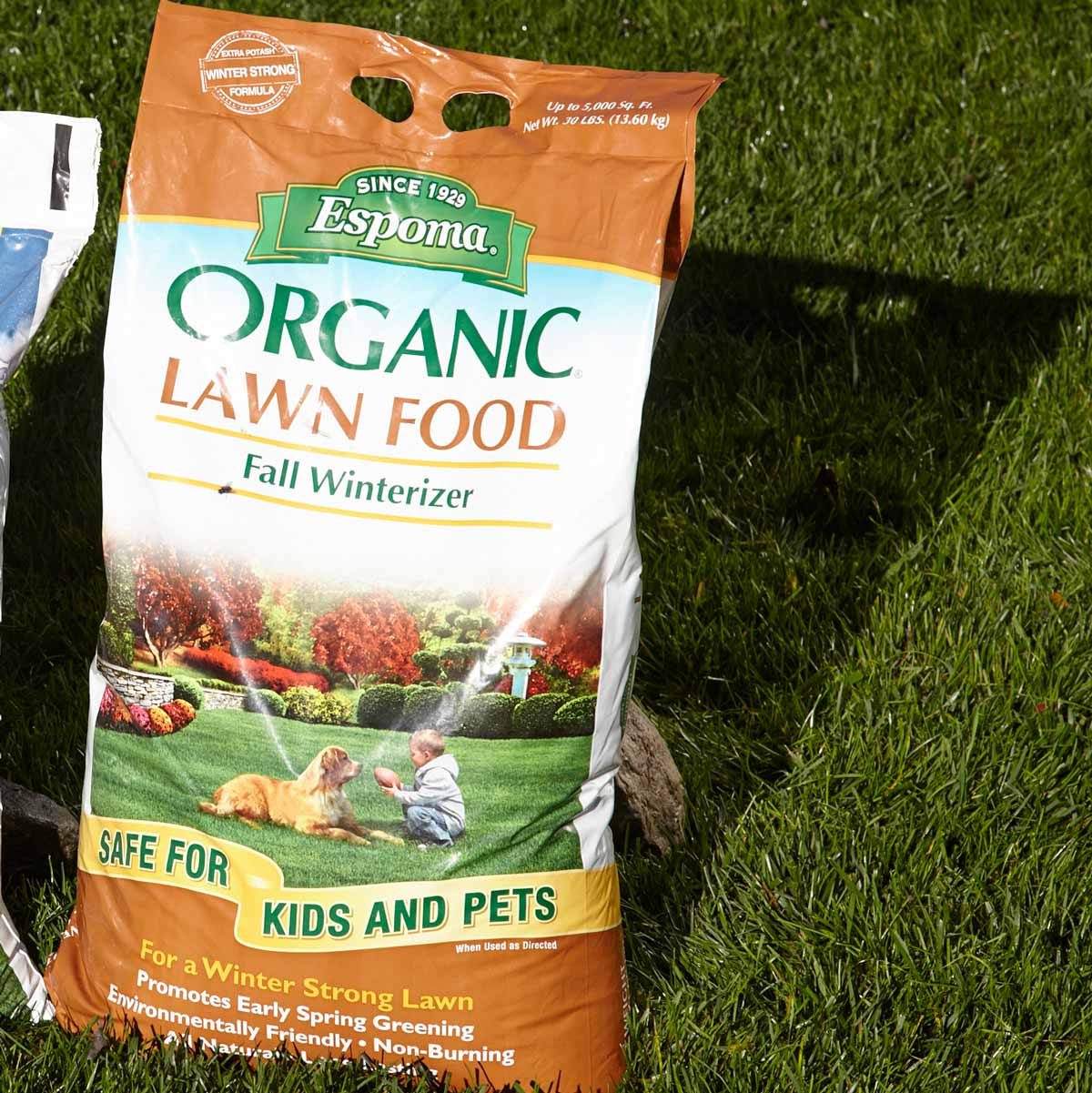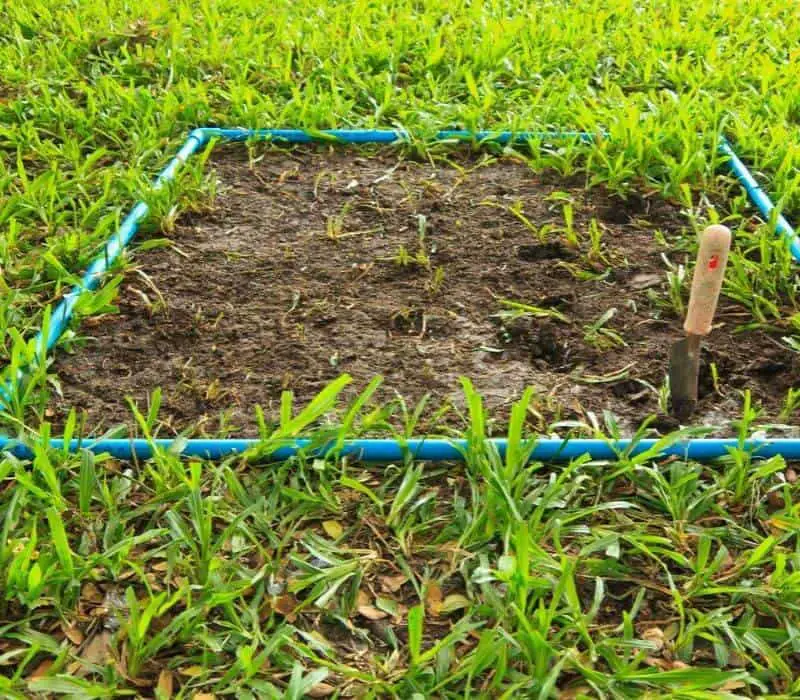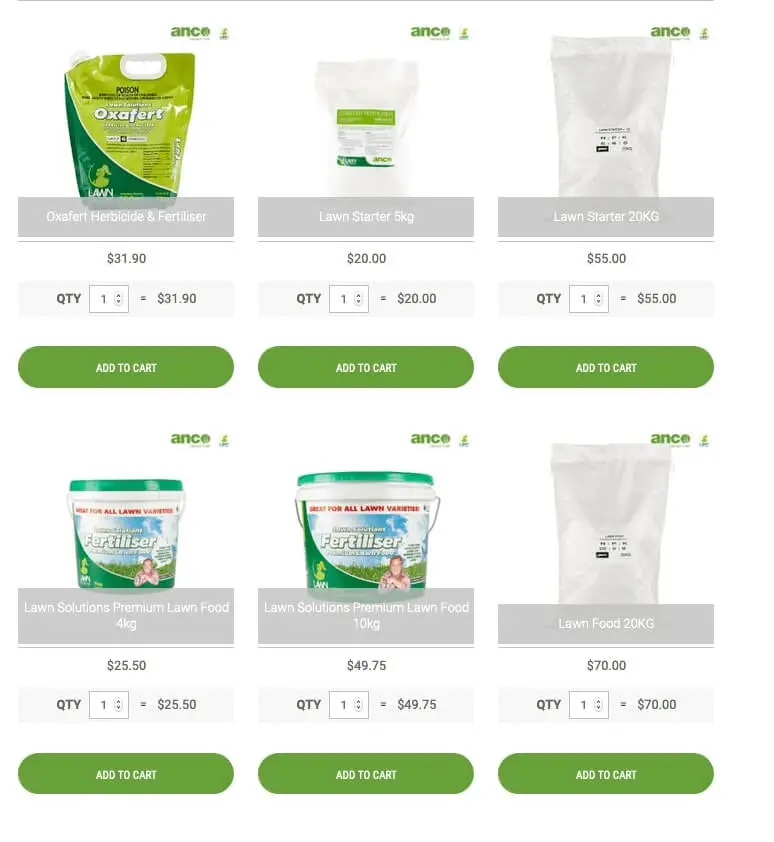We Supply Your Grass With All The Nutrients It Needs To Thrive And Develop A Bright Green Color
If you want a soft, gorgeous lawn that is of the highest quality, then you need an expert lawn care professional to apply fertilization treatments to the grass throughout the year. These treatments will supply your grass with vital nutrients that it needs to thrive.
We create bright, healthy, green lawns by fertilizing them in Chesterfield, Macomb, Shelby, and the nearby townships and cities of Michigan.
Also Check: Orange Lawn Fungus
How To Effectively Fertilize Your Lawn
To effectively fertilize your lawn, be aware of which types of fertilizer work best with the soil and grass.
Different fertilizers will provide different results, and not all of them will work well with every lawn.
Consult an expert for more information about which type of fertilizer will work best.
The amount of fertilizer you need will depend on how much seed was planted, the type of grass, and the size of the yard.
Check the fertilizers label for recommendations on how much fertilizer is necessary during applications.
After Fertilizing Your Lawn
After fertilizing the lawn, consider applying a weed control treatment to the yard.
This treatment will ensure that the nutrients in the fertilizer are not soaked up by unsightly weeds.
In addition to the treatment and fertilizing, its important to water the lawn regularly to ensure that the soil stays hydrated.
Remember to keep children and pets away from the fertilized area until it has absorbed into the soil completely.
If you live near a body of water, know that you need to follow extra safety precautions to avoid contaminating the water.
We recommend making a 5- to 10-foot buffer between the waters edge and your fertilized land to be safe. If possible, use fertilizer without phosphorous to prevent contamination.
Contact Yardworx for the best spring lawn care in Calgary and Edmonton today! You can also order our services directly by filling out our online form.
- 3428 99 St NW #610 Edmonton, AB T6E 5X5
Consult Lush Lawn For Your Lawn Fertilizer Needs
Michigan lawns need the correct amount of fertilizer applied at the right time. While this fertilizer lawn schedule can be beneficial from a DIY standpoint, we also want you to know Lush Lawn offers a professional lawn fertilization program that aligns with this timeline. Pairing the optimal products and techniques with the ideal timing, we help Southeast Michigan homeowners keep their lawns lush, green and weed-free, without any hassle or inconvenience.
For more information on our fertilization services, visit the FAQs section of our website. Then, when youre ready, request a free quote, and well be in touch!
You May Like: Trugreen Mole Control
Also Check: Who Sells Mtd Riding Lawn Mowers
The Guide For Spring Fertilizer
Spring is a great time in Canada, that’s for sure. There’s warmer weather , blossoming plants and flowers, and NHL playoffs are on almost 24/7… What’s not to love!
It’s no secret that spring is the best time of year for lawn care. Now that the weather is a little better , it’s time to get it ready for the long season ahead.
There are a number of beneficial tasks that home owners can do in spring to get a head start before summer creeps up on us. One of the most important things on your list should be a spring fertilization.
What Are The Main Nutrients That Soil Needs To Be Healthy

The main nutrients that the soil needs in large quantities are:
- Carbon : Plants get this nutrient through carbon dioxide in the air
- Hydrogen : The soil gets this necessary element from water
- Oxygen : This element is transmitted to plants through water and air
- Nitrogen : Nitrogen helps plants to make the protein they need to produce new tissue, but this element is rather rare in nature.
- Phosphorus : Phosphorus stimulates good root development and promotes the active growth of plants and flowers. To absorb phosphorus, the majority of plants need soil pH to be between 6.5 and 6.8.
- Potassium : Potassium helps strengthen plants’ ability to resist diseases and other stresses
- Other secondary elements such as calcium, sulfur, and magnesium are also needed in smaller quantities to ensure the proper development of plants.
Since we cannot rely on nature to provide all the essential elements, some have to be added by you or even better, one of Vertdures experts. When you buy fertilizer, you will notice that the content of the N-P-K elements is indicated on each product. For example, if you buy a bag of fertilizer and the bag reads 12-2-6, it means that your fertilizer contains 12% nitrogen, 2% phosphorus, and 6% potassium.
Don’t Miss: What Does Lawn Mowing Service Cost
Use A Spreader With Settings
When applying fertilizer, you must not do it haphazardly. Use a spreader that has settings on it. The settings will tell youhow many pounds of fertilizerare dispersed per square foot. The type of turf you have and the amount that your lawn needs can be determined with the soil test. Spreaders also allow homeowners to ensure that the fertilizer does not pile up in certain areas.
What Should I Do After I Fertilize My Lawn
After application, the next steps should be clean up. Fertilizer that has been left behind could cause health risks to people, pets, and the natural environment. It is important that you take precautions to prevent mishaps. Fertilizer that has been left behind could potentially burn your grass, or runoff into storm drains. When loading your spreader, try laying down a tarp underneath to catch wayward granules.
You May Like: When To Fertilize Lawn In Denver
Things To Remember When Fertilizing
What Are The Numbers And Letters On Fertilizer
The numbers and letters on the fertilizer will help you identify if you are applying the right mix to your turf. The number and letters that you see are called the N-P-K ratio. To better understand this, you may have to take a trip back to your high school chemistry days.
The first letter, N stands for Nitrogen, the P stands for Phosphorus, and the K stands for potassium. These are three organic ingredients that a beautiful lawn will have to keep in balance to look great.
When you see a fertilizer that is 20-5-10, it will mean that the fertilizer contains 20% Nitrogen, 5% Phosphorus, and 10% Potassium. After conducting a soil test, you can choose the fertilizer bag that is right for your lawn.
Don’t Miss: How Much Does Full Service Lawn Care Cost
When Should I Overseed My Lawn In The Spring
Early spring is the suitable time for most grass types. It’s also the time when most people start noticing the first bald patches as the new grass sprouts, hence preferred time to act. If you decide to overseed your lawn in spring, make sure you choose appropriate grass type and always follow the given instructions.
Debating The Use Of Fertilizer On The Lawn
Whether or not you should use fertilizer on a lawn depends on where you stand on organic or low impact-to-chemical gardening practices. Organic gardeners avoid the use of any chemical products as lawn fertilizers. The main concern is the fertilizer run-off can enter the local water supply. There is good evidence that shows phosphorus and nitrogen from lawn and agricultural fertilizers are contaminating streams, rivers, and groundwater supplies, creating a pressing environmental problem.
Read Also: How To Get Rid Of Clover In My Lawn Naturally
How Much Should I Water My Lawn After Fertilizing
How much fertilizer you need is directly impacted by your watering schedule. The more you water your lawn, the more fertilizer it will need. As the grass grows, it uses more nutrients. If you have an automatic sprinkler system, you should fertilize your lawn about every six weeks. You dont want the watering to outpace the fertilizing as that could negatively impact the lawns growth cycle. If you dont have a sprinkler system, you can wait an additional two weeks between applications. Also, be sure to carefully read the fertilizer label to learn whether you should water the lawn before or after applying the product. Granulated fertilizers need moisture to break down after application, while other fertilizers require you to soak the lawn beforehand.
Tips To Effectively Fertilize Your Lawn In Spring

Keeping a lawn in top condition can be challenging, especially in a climate with extreme winters and temperate summers like Calgary and Edmonton.
Many homeowners in Alberta struggle with when and how to fertilize their lawns, while others dont know which fertilizer is right for optimal grass growth.
If you are here, you are probably struggling with spring lawn care and we are here to help!
Our lawn care professionals have created this guide to help you get your lawn ready for spring.
Follow these easy 4 fertilization steps to prepare your yard for spring.
Read Also: What Are The Steps For Lawn Care
When Should I Fertilize My Lawn In The Spring
Youve prepared your lawns for winter, waited patiently for warmer temps and longer days to roll around, and now finally jumping into your spring lawn care. So now you may be asking yourself, When should I fertilize my lawn in the spring?
Please enable JavaScript
Its a common question, but for us avid lawn care fanatics, it may not be as cut and dry. Theres a lot of outstanding questions that we should answer first before we start applying fertilizer to our lawns this spring.
Springtime is when your grass is actively growing, so youll want to make sure you account for this in your annual lawn fertilizer schedule. Feeding your lawn in the spring will help develop stronger, deeper roots and promote a healthy green lawn. Providing enough food for your turf is key to helping it get through the hot and stressful summer months.
Picking The Right Fertilizer
Picking the right fertilizer depends on your lawn type and your end goal is. If you want to make your lawn greener and healthier, a product like The Andersons 16-0-8 Fertilizer with Humic DG is great for you. It contains methylene-urea that will give your lawn an even feed over eight to 10 weeks. Its also safe for pets.
Recommended Reading: When Should I Put Lime On My Lawn
Why Does Overseeding Need At Your Lawn
When grasses become older after few years, mature grasses start to slow down their reproduction rate naturally. The grasss blades naturally live 45-60 days. Moreover, young grass can produce tillers faster than the older. The young grass is a top secret behind of managing a healthy, greenly, and thickly lawn, and the patience of overseeding is the easiest formula to keep the grass young on the lawn.
However, overseeding is needed for a lawn for many reasons which are as below:
01. It is an easy way to fill up the undecorated areas of the lawn.
02. Sometimes, grasses do not grow accordingly due to some factors like weather, neighborhood dogs etc.
03. It helps to improve the density of the grasses on the lawn, and also prevents weeds to grow from the grassroots.
04. It improves the color and appearance of the lawn.
Where Are The Npk Numbers On Fertilizer
The NPK numbers for your spring, summer, and fall fertilizer are located directly on the front of the bag. If you purchase granular or liquid fertilizer, seeing the N-P-K ratio should be very clear. Homeowners that want a healthy lawn need to also keep in mind the type of turf they have when considering these numbers.
Also Check: How To Dispose Old Lawn Mower
Getting Ready For Spring Lawn Care
As your lawn responds to natures spring wake-up call, help prepare it for a year of healthy growth with the lawn care it needs to help it thrive. By tackling a few simple chores, you will prepare your lawn to defend itself against this years wave of weeds, diseases and drought.
Related Products
Anytime in early spring or fall
Use only on established lawns of the following turf types: Bermudagrass, centipedegrass, all varieties of St. Augustinegrass and zoysia.
Do not use on any other turf types: bahiagrass, bentgrass, ormond variety of Bermudagrass, buffalograss, carpetgrass, dichondra, fescue, kikuyugrass, ryegrass or seashore paspalum lawns.
Use 2.5 pounds per 1,000 square feet
Apply anytime spring through fall at temperatures between 50 degrees F and 90 degrees F.
On established lawns without harming lawn grasses.
Do not use on Carpetgrass, improved varieties of St. Augustinegrass, such as floratam, dichondra or desirable clovers.
- 0.240% Dithiopyr
| Use only on established lawns of the following turf types: Bermudagrass, Buffalograss, Kentucky bluegrass, ryegrass, fescue, seashore paspalum and zoysia. |
| Do not use on bahiagrass, carpetgrass, annual bluegrass , bentgrass, centipedegrass, St. Augustinegrass or dichondra. |
Should You Cut Grass Before Fertilizing In Spring
When fertilizing a lawn, it is best to apply fertilizer after the lawn has been mowed so it has a few days to absorb the fertilizer. Wait until late summer, fall or early spring to fertilize the lawn. These are the optimal times to apply fertilizer. Mow the lawn and leave a small bit of grass clippings on the lawn.
Recommended Reading: How To Replace Lawn Grass
How To Apply Fertilizers In Your Lawn In The Spring
Spring starts towards the end of March, but the sun is not at its peak around that period. It is always advisable you begin to apply your fertilizer when the soil temperature clocks 55 degrees Fahrenheit. From that period, you can fertilize your lawn three to five times before Spring wraps up.
Slow-release fertilizers are arguably the best type of fertilizer to use in the Spring. It will help you avoid issues like the over-application of fertilizers. Also, ensure its graduated so that the fertilizers will be evenly distributed.
Please note that this article is just a portion on my full Spring lawn care guide which you can see here. Alternatively you can simply scan the Spring fertilization schedule here.
How To Prepare The Lawn For Sowing

Do you want to completely recreate the lawn?
Then you have to do a little preparatory work: This is usually divided into two phases, the rough subgrade and the fine subgrade.
This has to be done with the rough subgrade:
-
Dig the lawn around two spades deep or use a tiller.
-
Remove everything that bothers you: stones, roots and weeds.
-
Improve loamy, firm soils with quartz sand or peat.
-
If the soil is sandy, add leaf compost, horn meal or bark humus.
-
Smooth the area with a rake.
After that, roll the terrain and water it.
Also, make sure that no one enters the area for the next two to three weeks.
After at least 14 days
, the next phase will begin.
This is to be done with the fine subgrade:
-
The soil should become a loose bed in which the seeds can grow well.
Therefore it is loosened and weeded again with a rake.
-
Use a rake to level the soil again.
-
Work the area again with a roller then rake again.
After sowing
: How long does it take for the lawn to grow?
Don’t Miss: How To Get Lawn Mowing Customers
When To Water Lawn After Fertilizer Application
Generally speaking, you shouldnt water your lawn after applying weed and feed, because the water can disperse the substance disproportionally. Rain and watering may cause that you have a lot of weed and feed granules on one spot and not enough on the other, and like that, you wont have good results. Thus, check the weather forecast to be sure that after fertilization, it wont rain for at least 48 hours after youve used lawn weed and feed.
When To Use Compost
Compost does more than feed grass it also builds and feeds soil. Compost contains microorganisms, micronutrients and organic matter items that nourish soil and foster a healthy underground environment in your lawn. When should you use compost? Spread a thin layer over lawns in early spring to fuel strong growth. Any time you plan to aerate, spread compost after aerating to improve soil and give roots a boost. It’s also a good idea to apply compost before overseeding thin turf. Add compost to a lawn by the shovelful in several places.
Read Also: How Often Should Fertilize Lawn
Be Wary Of Fertilizer Application Rates
Across the board, most fertilizer manufacturers are overzealous about their recommended dose and feeding schedule. Start light with half the recommended amount and rate of fertilizer. You can reapply if you dont like the results. Over a season or two, youll get a clear sense of how much it takes to get a healthy lawn.
A healthy lawn will be a relatively light shade of bright green. A lawn that is a deep, almost blackish green, has been very heavily fertilized. The dark green color comes from a lot of nitrogen-based fertilizer used on the lawn. It is highly likely that some of that fertilizer has run off into the streets, storm sewers, and has made its way into local streams and rivers.